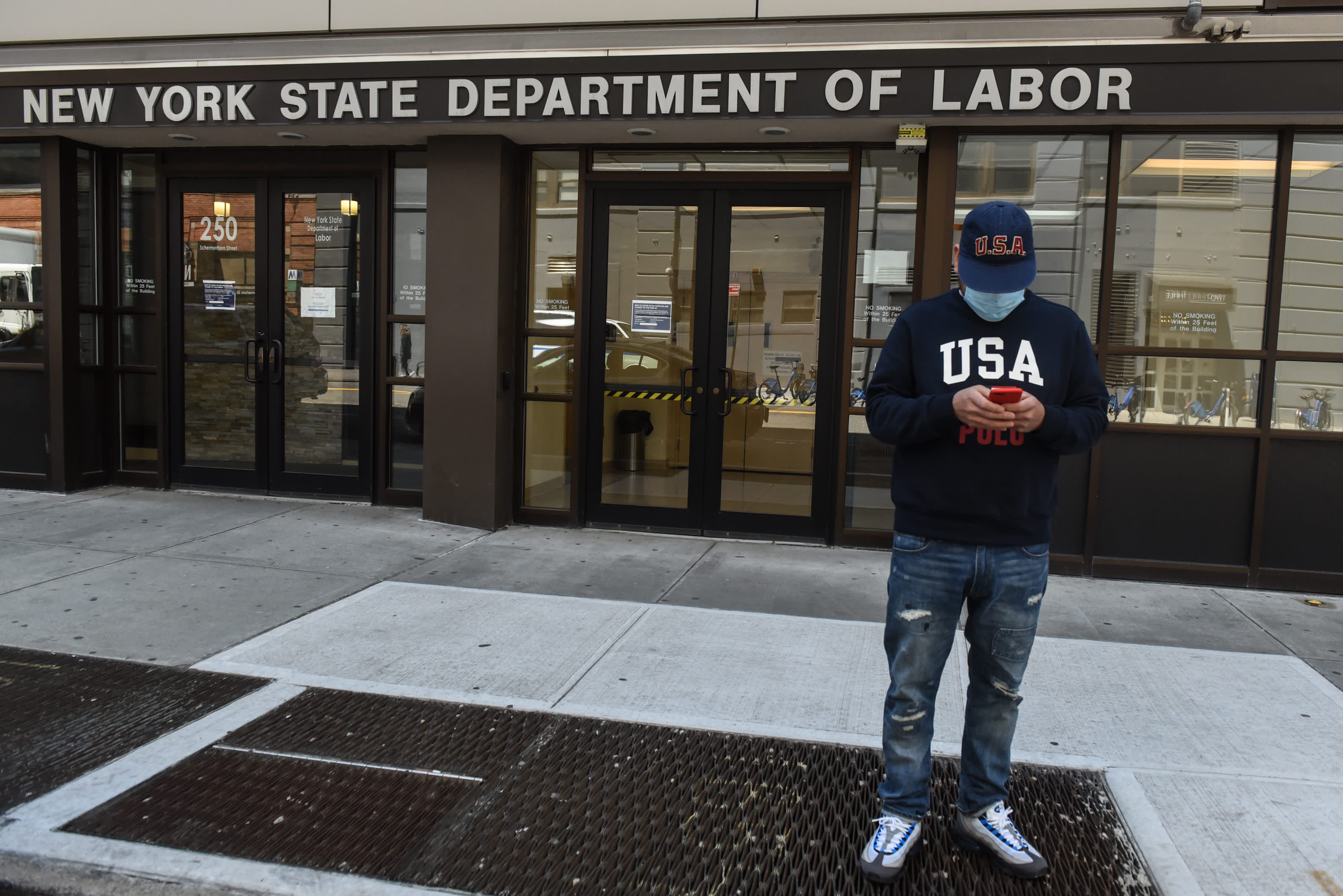Luis Mora stands in front of the closed offices of the New York State Department of Labor on May 7, 2020 in Brooklyn, New York City.
Stephanie Keith | Getty Images
The coronavirus pandemic created a huge crash in new job hiring in March and early April, but the worst may be behind us, according to data gathered by LinkedIn.
The Microsoft-owned professional social network keeps track of a hiring rate that shows the number of people who have been hired in a region per day versus a year earlier. The metric is calculated on a seven-day rolling basis and is based on changes in user profiles.
LinkedIn's data shows that the hiring rate in the U.S. steadily fell throughout March as a result of the Covid-19 pandemic before beginning to plateau in mid-April, LinkedIn chief economist Karin Kimbrough said.
The hiring rate in the U.S. on March 3 was up 25% from a year earlier, but began falling the next day. By April 15, the hiring rate was down nearly 38% from the previous year. Since then, the hiring rate has remained relatively stable on a year-to-year basis. The most recent data shows that the hiring rate in the U.S. on May 8 was down nearly 34% year over year.
"We are not yet seeing signs of improvement, but what we are thinking is that we may been through the worst of the job losses now," Kimbrough said.
Although the U.S. hiring rate appears to have plateaued, the road to recovery will likely be long and slow, Kimbrough said. Other regions that were hit earlier by the coronavirus, like China and France, have already begun a recovery in hiring rates, but progress is slow.
"We're seeing gradual improvement from China," Kimbrough said. "But they haven't yet returned back to where they were prior to the crises. So if China is any guide for the U.S., then I think it's going to be an extremely gradual pace of recovery in terms of hiring."
A key reason recovery takes long is because many companies are taking the time to retool their strategies and reconfigure their supply chains first before turning their attention to what type of positions they will want to add once they resume hiring, Kimbrough said.
"Hiring is going to take a back seat to figuring out a business strategy," Kimbrough said.


